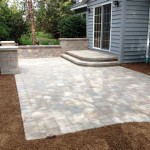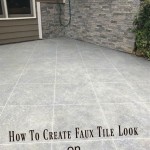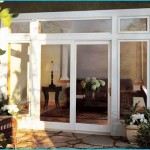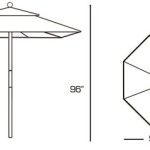Wood Stamped Concrete Patio: A Comprehensive Guide
Wood stamped concrete patios present a compelling alternative to traditional wood decking and paving stones. This innovative approach combines the aesthetic appeal of natural wood with the durability and cost-effectiveness of concrete. The process involves pouring concrete and then imprinting it with a pattern that replicates the look of wood planks, complete with realistic grain details, knots, and even subtle variations in color. This creates a patio surface that is not only visually appealing but also remarkably resistant to wear and tear, weathering, and pest infestations, all common concerns with natural wood.
The popularity of wood stamped concrete patios stems from their versatility. They can be tailored to complement a wide range of architectural styles and landscaping designs. From rustic cabins to modern minimalist homes, the color, texture, and pattern of the stamped concrete can be customized to achieve the desired aesthetic. This customization extends beyond the basic wood grain pattern, allowing for variations in plank width, stain color, and even the inclusion of decorative elements like faux nail holes or distressed textures. The result is a unique outdoor living space that reflects individual tastes and preferences.
Furthermore, wood stamped concrete patios offer significant practical advantages. Unlike wood decking, they require minimal maintenance. There is no need for regular staining, sealing, or replacement of rotted boards. The concrete surface is resistant to fading, cracking, and warping, ensuring that the patio retains its beauty and structural integrity for years to come. This translates to significant cost savings over the lifespan of the patio, as well as reduced effort and time spent on upkeep.
Durability and Longevity
One of the primary advantages of wood stamped concrete patios is their exceptional durability. Concrete is inherently a strong and resilient material, capable of withstanding heavy foot traffic, furniture weight, and harsh weather conditions. Unlike wood, it is not susceptible to rot, decay, or insect damage. This makes wood stamped concrete an ideal choice for outdoor applications where long-term performance is paramount.
The durability of a wood stamped concrete patio is further enhanced by the application of sealants. These sealants create a protective barrier that shields the concrete from moisture penetration, staining, and abrasion. They also help to prevent the growth of mold and mildew, which can be a problem in damp or shaded areas. Regular sealing, typically every two to three years, is recommended to maintain the patio's appearance and extend its lifespan.
The longevity of a wood stamped concrete patio also depends on proper installation. A well-prepared sub-base is essential to prevent cracking and settling. The concrete mix should be formulated to meet the specific requirements of the climate and soil conditions. Experienced contractors will take these factors into consideration to ensure that the patio is built to last. Utilizing fiber reinforcement within the concrete mix also enhances its strength and resistance to cracking, particularly in areas prone to freeze-thaw cycles.
In comparison to other patio materials like pavers or natural stone, wood stamped concrete offers a seamless surface with fewer joints. This reduces the risk of weeds growing between cracks and makes it easier to clean. The absence of individual units also minimizes the possibility of uneven settling or displacement, which can create tripping hazards. This seamlessness adds to the overall durability and safety of the patio.
Cost-Effectiveness
While the initial cost of a wood stamped concrete patio may be slightly higher than that of a basic concrete slab or a simple gravel patio, it is often more cost-effective than traditional wood decking or high-end paving stones. The cost savings become even more apparent when considering the long-term maintenance expenses associated with other materials. Wood requires regular staining, sealing, and occasional repairs or replacements, while paving stones may require joint stabilization and weed control.
The cost of a wood stamped concrete patio can vary depending on several factors, including the size of the patio, the complexity of the design, the choice of color and pattern, and the labor rates in the area. However, the overall cost is generally comparable to that of other mid-range patio materials, such as composite decking or interlocking pavers. Furthermore, the increased curb appeal and property value that a well-designed wood stamped concrete patio can provide should also be taken into account.
The labor cost is a significant component of the overall expense, but it is important to prioritize quality workmanship. Experienced contractors will have the necessary skills and equipment to ensure that the concrete is properly mixed, poured, stamped, and sealed. A poorly installed wood stamped concrete patio can be prone to cracking, fading, and other problems that will require costly repairs or even replacement. Therefore, it is crucial to choose a reputable contractor with a proven track record.
In addition to the initial installation cost, consider the reduced maintenance expenses. The absence of rotting wood, insect damage, and frequent repairs contributes to significant savings over the life of the patio. This makes wood stamped concrete a financially sound investment for homeowners who want a beautiful and durable outdoor living space without the hassle and expense of traditional materials.
Design Flexibility and Customization
The design flexibility of wood stamped concrete patios is one of their most appealing features. The wide range of available colors, patterns, and textures allows homeowners to create a patio that perfectly complements their home's architectural style and landscaping. Whether the goal is to replicate the look of weathered barn wood, elegant hardwood flooring, or rustic cedar planks, wood stamped concrete can achieve the desired effect.
The customization options extend beyond the basic wood grain pattern. Contractors can create custom stamps to replicate specific types of wood or incorporate unique design elements. They can also use different staining techniques to achieve a wide range of colors, from natural wood tones to vibrant hues. The use of antiquing agents and release powders can further enhance the realism of the wood grain pattern, adding depth and character to the finished surface.
The shape and size of the patio can also be customized to fit the available space and the homeowner's needs. Wood stamped concrete can be used to create patios of any shape, from simple squares and rectangles to complex curves and angles. It can also be used to create walkways, pool decks, and other outdoor features that seamlessly integrate with the patio. The ability to create seamless transitions between different areas of the outdoor living space enhances the overall aesthetic appeal and functionality.
Furthermore, wood stamped concrete can be combined with other decorative elements, such as borders, inlays, and decorative saw cuts. These elements can add visual interest and create a unique design that reflects the homeowner's personal style. For example, a brick border can add a touch of traditional charm, while a decorative saw cut can be used to create a custom pattern or design. The possibilities are virtually endless, allowing homeowners to create a truly one-of-a-kind outdoor living space.
The customization aspect also applies to the concrete itself. Additives can be incorporated into the concrete mix to enhance its strength, durability, and resistance to staining. For example, integral color pigments can be added to create a uniform color throughout the concrete slab, while surface hardeners can increase its resistance to abrasion and wear. These additives can further enhance the lifespan and beauty of the wood stamped concrete patio.
In conclusion, wood stamped concrete patios offer a compelling combination of durability, cost-effectiveness, and design flexibility. They provide a beautiful and low-maintenance alternative to traditional wood decking and paving stones, allowing homeowners to create stunning outdoor living spaces that will last for years to come.

Stamped Overlay Wood Concrete Patio Designs Decor

Woodplank Stamp Patio Blackwater Concrete Gore Va

Wood Grain Concrete Stamps 9 Patterns Brickform

Is Concrete Stained To Look Like Wood A Good Idea 21oak

Wood Concrete Stamps Weathered Planks

10 Awesome Stamped Concrete Patio Ideas

Katy Patio Cover With Stamped Concrete Tradition Outdoor Living

Stamped Concrete For Decks Patios Dallas Fort Worth Willsha Pools

Biondo Cement Stamped Concrete Gallery

Stamped Concrete That Looks Like Wood 30 Amazing Examples Will Leave You Stunned Inspiring Designs
Related Posts








